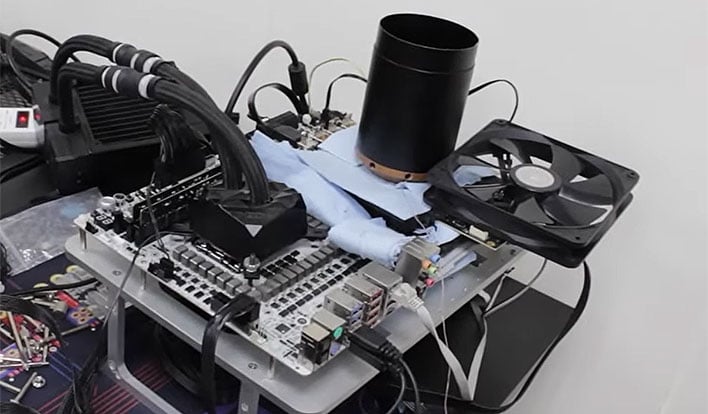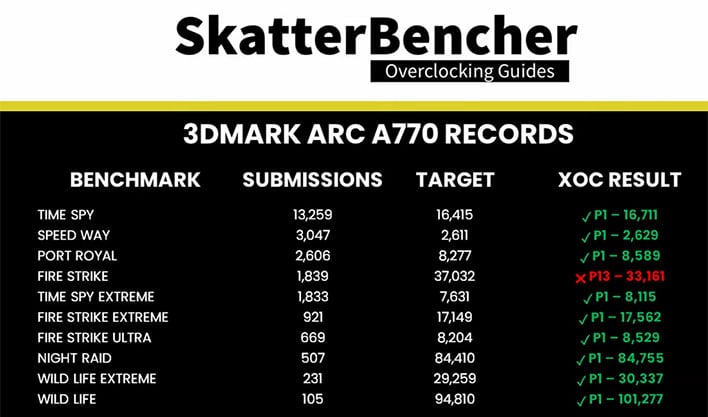Overclocker Dips Intel's Arc A770 GPU In LN2 To Hit 3.6GHz At Sub-Zero Temps

To introduce his video, ScatterBencher pontificated about why someone would want to spend the time, energy and resources overclocking an Intel Arc A770 GPU. The answer is along the lines of the old mountaineering adage of “because it’s there,” translated into OC tech talk as “because I’m ScatterBencher.” The overclocker stated that he wants to know the potential performance of every chip, and Intel’s GPUs are of particular interest as they are relatively new to the game.
Two targets were in ScatterBencher’s sights when he set off on his Alchemist extreme overclocking quest. The primary aim was to achieve the highest headlining GPU frequency. Secondly, to cement his achievement he intended to grab a first-place record in one of the Intel A770 HWBot benchmark league tables.
As LN2 overclocking of the Intel Arc series is still uncommon, there were some unforeseen hurdles to jump. The first physical hardware problem noticed was the unusual spacing of the mounting holes. Due to this difference, the LN2 cooling pot was held in place by gravity alone.
A mix of ElmorLabs overclocking equipment was able to be used on the A770 out of the box, or with some minor modifications. This equipment included the ElmorLabs Volcano LN2 container, the EVC2SE voltage controller programmer, and the KTH-USB temperature monitoring apparatus.

With that all set up, there are still some particular challenges presented by Intel Arc Alchemist cards, like the A770. In the slide above, you can see ScatterBencher has called out each potential speed-bump to extreme OC success. One of the software tools that was used to bypass these limitations was the Arc OC tool from Shamino. Importantly, this tool exposes OC lock frequency and voltage parameters. ScatterBencher also found Acer’s bundled BiFrost graphics card overclocking tool, with its plain text settings file, a useful vector for tweaking configurations beyond normal bounds.
Overclocking The Alchemist
Having put in so much preparation, the overclocker was at first disappointed in his system’s 3DMark benchmarking performance. Initial test scores were coming in much worse than expected. However, the root cause of the issue was found to be the system CPU, which was limiting the graphics card to PCIe Gen4 x1... A quick CPU-swap later and “the good results came in fast,” ScatterBencher remarked, with some relief.The headlining result of a GPU clock of 3,586MHz was recorded for just a few seconds before the system locked up. If you are looking for the first usable light workload GPU clock, we have to scale back to about 3,400MHz. Lastly, for ScatterBencher’s compete set of 3DMark ‘P1’ results, the GPU was set to max out at just a little above 3,000MHz (3,012MHz and 1.12V).

If we take the ~3,000MHz working GPU frequency as the best achievable, that is a good 25% better than the default boost frequency. We wouldn’t call this a stunning result for LN2 extreme overclocking, but the Arc series of GPUs and supporting software are only in their infancy, respectively.
ScatterBencher modestly admitted he isn’t a seasoned GPU overclocker and some of his final thoughts were that more specialized OC experts should be able to pick up where he has left off, perhaps with some help from his experience, and be able to march ahead. We must also congratulate ScatterBencher on an Intel Arc extreme overclocking job well done, and for the entertaining and informative videos he shares.

